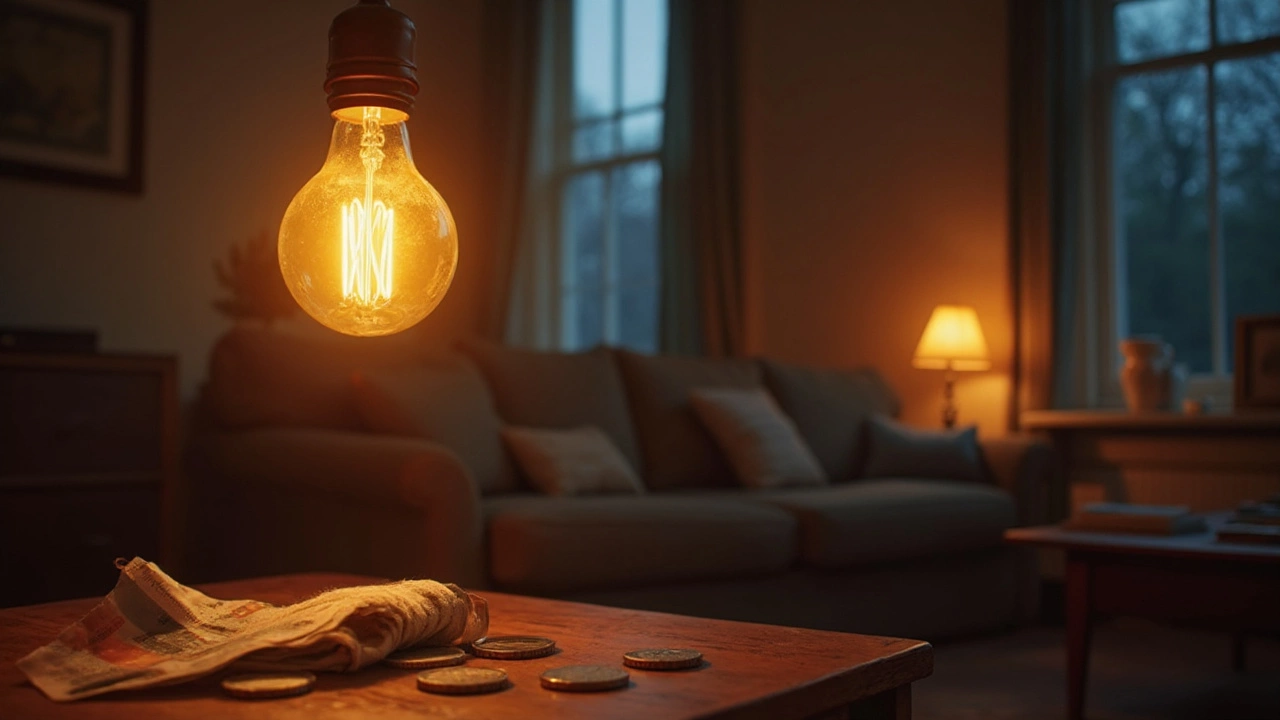Incandescent Bulbs: Simple Facts and Practical Tips
Incandescent bulbs are the old‑school lights you probably see in a few lamps around the house. They work by heating a thin wire until it glows, giving off a warm, familiar light. If you’re wondering whether they’re still useful, how much they cost to run, or if you should swap them out, you’re in the right place.
How Incandescent Bulbs Work and Why They’re Different
Inside an incandescent bulb is a tiny metal filament, usually made of tungsten. When electricity flows through, the filament gets hot and emits light. The glass envelope keeps the filament safe and stops oxygen from ruining it. Because the filament is so hot, most of the energy turns into heat, not light. That’s why the bulb feels warm after you use it.
The warm glow is great for creating cozy atmospheres. Think about a bedside lamp or a small table lamp where you want a soft, relaxed feel. The color of the light (often called “warm white”) is measured in Kelvin, and most incandescents sit around 2700K, which is why they feel so inviting.
Pros, Cons, and When to Use Them
Pros are simple: they’re cheap to buy, they’re easy to replace, and they work with any dimmer switch. If you have a vintage lamp with a classic look, an incandescent bulb keeps the style authentic.
Cons are bigger. They use a lot of electricity – typically 40 to 100 watts for the same brightness you’d get from a 6‑10 watt LED. That extra power shows up on your energy bill. They also have a shorter life, usually around 1,000 hours, so you’ll swap them out more often.
Use incandescents when you need a dimmable fixture that isn’t compatible with LEDs, or when you want a specific warm tone that newer bulbs can’t fully replicate. For task lighting in kitchens or workspaces, LEDs usually win because they’re brighter and more efficient.
Saving Money and Energy Without Losing the Warm Glow
If you love the look of incandescents but want to cut energy use, consider halogen bulbs. They’re a type of incandescent that’s a bit more efficient and can work with many dimmers. Another option is “soft‑white” LEDs that mimic the warm color of incandescents. Look for labels that say 2700K and a high CRI (color rendering index) to keep colors true.
When you finally decide to replace them, don’t just toss them in the regular trash. Most areas treat incandescent bulbs as regular waste, but check local rules – a few places have recycling programs for the glass and filament.
Buying Tips and Quick Fixes
Buy bulbs that match the fixture’s base type – most are the standard “E27” screw base, but some decorative lamps use “E14” or a candelabra base. Check the wattage rating on your fixture; never exceed it, or you risk overheating.
If a bulb flickers, it might be loose or the socket could be dirty. Turn off the light, let the bulb cool, then gently tighten it. A quick wipe with a dry cloth can clear dust that causes poor contact.
In short, incandescents still have a place for ambience and cost‑effective replacements in certain spots. Knowing when they shine, how much they cost to run, and what modern alternatives look like helps you make the best choice for your home lighting."
Most Inefficient Residential Lighting: Why Old Bulbs Still Drain Your Wallet
- Gavin Whitaker
- |
- |
- 0
Wondering what's draining your energy bill at home? This article digs into the most inefficient type of residential lighting and explains why old-school bulbs burn more than just light. You'll learn about how much energy goes to waste, why it costs you more, and what better options to use instead. We'll also bust some common lighting myths and give you real-life tricks to cut energy use. Stay ahead and make your home brighter and cheaper to run.
View more